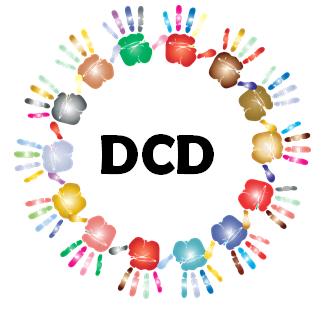Clumsiness or more?- Developmental Coordination Disorder
What is it?
- According to American Psychological Association, Developmental coordination disorder (DCD) is a common neurodevelopmental disorder characterized by deficits in both fine and gross motor coordination which have a significant impact on a child’s activities of daily living or school productivity.
- Children with DCD exhibit these deficits in the absence of identifiable medical or intellectual or visual impairment, or another motor disability, such as cerebral palsy.
- It is thought to affect around 5% of school-aged, but despite its high prevalence, it remains one of the less well understood and recognized developmental conditions in both educational and medical settings. The prevalence rate is 5-6%, which is approximately 1 in every 20 children.
- It is often co-morbid with other childhood disorders including attention deficit hyperactivity disorder (ADHD), dyslexia, speech/language impairment.
- Frequently described as “clumsy” or “awkward” by their parents and teachers, children with DCD have difficulty mastering simple motor activities, such as tying shoes or going downstairs and are unable to perform age-appropriate academic and self-care tasks.
Signs and Symptoms
Parents are the initial evaluators to spot signs and symptoms of DCD in their child before anyone else. When they notice their little one is struggling, having challenges or lacking behind other children in movement skills, such as sitting up or learning to walk. However, sometimes signs and symptoms of DCD are not caught until a child starts school. Teachers may see that the child cannot play at recess or in physical education classes in the same way that other children do. They also may observe that it takes the child longer to complete schoolwork. Children with DCD show a lack of interest in playing with other children.
Children with DCD may have difficulty when they try to:
- Run, skip, jump, hop on one foot, do jumping jacks, or perform other physical activities.
- Use hand-held objects such as crayons or scissors.
- Throw or catch a ball accurately.
- Follow directions for movements that involve more than one step. (When they make a mistake or can’t do the next step, they will start all over again rather than with the most recent action taken.)
- Know where their bodies are in space.
DCD at specific ages.
Preschool Has trouble throwing a ball Plays too roughly or often bump into other kids by accident Has difficulty sitting upright or still Grade K-2 Has trouble holding and using a crayon, a pencil, or scissors Doesn’t form or space letters correctly Struggles with going up and downstairs Frequently bumps into people by accident Has trouble with self-care, like brushing teeth Grade 3-7 Takes a long time to write Has trouble cutting foods Has difficulty with basic routines like getting dressed Struggles to line up columns when doing math problems
Role of professionals in the treatment of DCD
Historically, parents have been told not to worry about their child’s clumsiness because the child will outgrow the problem. However, current researchers in the area of DCD report that the children do not outgrow clumsiness and that, without intervention, they will not improve. A key treatment for DCD is occupational therapy (OT). There are many examples of how occupational therapists can work on challenging motor tasks. They might have kids trace letters on sandpaper to build handwriting skills, for example. Or use a lacing board with different colored laces to practice shoe tying. Kids with DCD may also work with physical therapists on balance and muscle tone. Occupational therapy and Physical Therapy assist with helping the child with DCD develop movement strategies that increase coordination, motor planning, balance, strength and body awareness resulting in a decrease in overall clumsiness and increased ability to perform functional activities at home, school and in the community. Speech and language therapy may also be required to help the child with the oral motor skills required for swallowing, chewing and speech.
References
Harrowell, I., Hollén, L., Lingam, R., & Emond, A. (2018). The impact of developmental coordination disorder on educational achievement in secondary school. Research in developmental disabilities, 72, 13-22.
Kirby, A., & Sugden, D. A. (2007). Children with developmental coordination disorders. Journal of the royal society of medicine, 100(4), 182-186.
https://www.understood.org/en/learning-thinking-differences/child-learning-disabilities/dyspraxia/understanding-developmental-coordination-disorder-dcd

